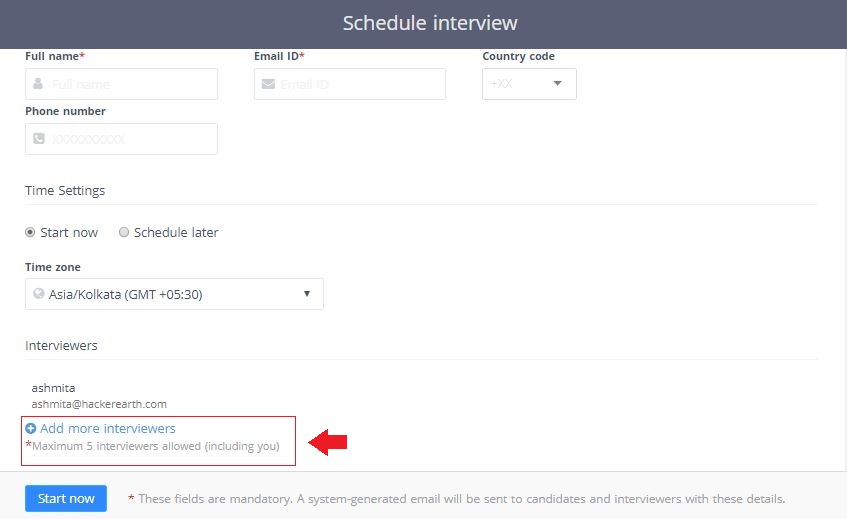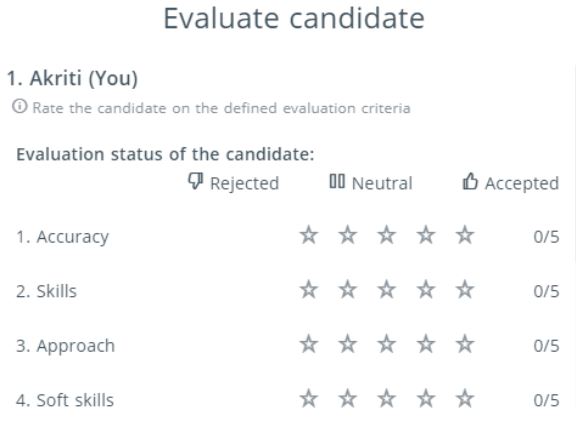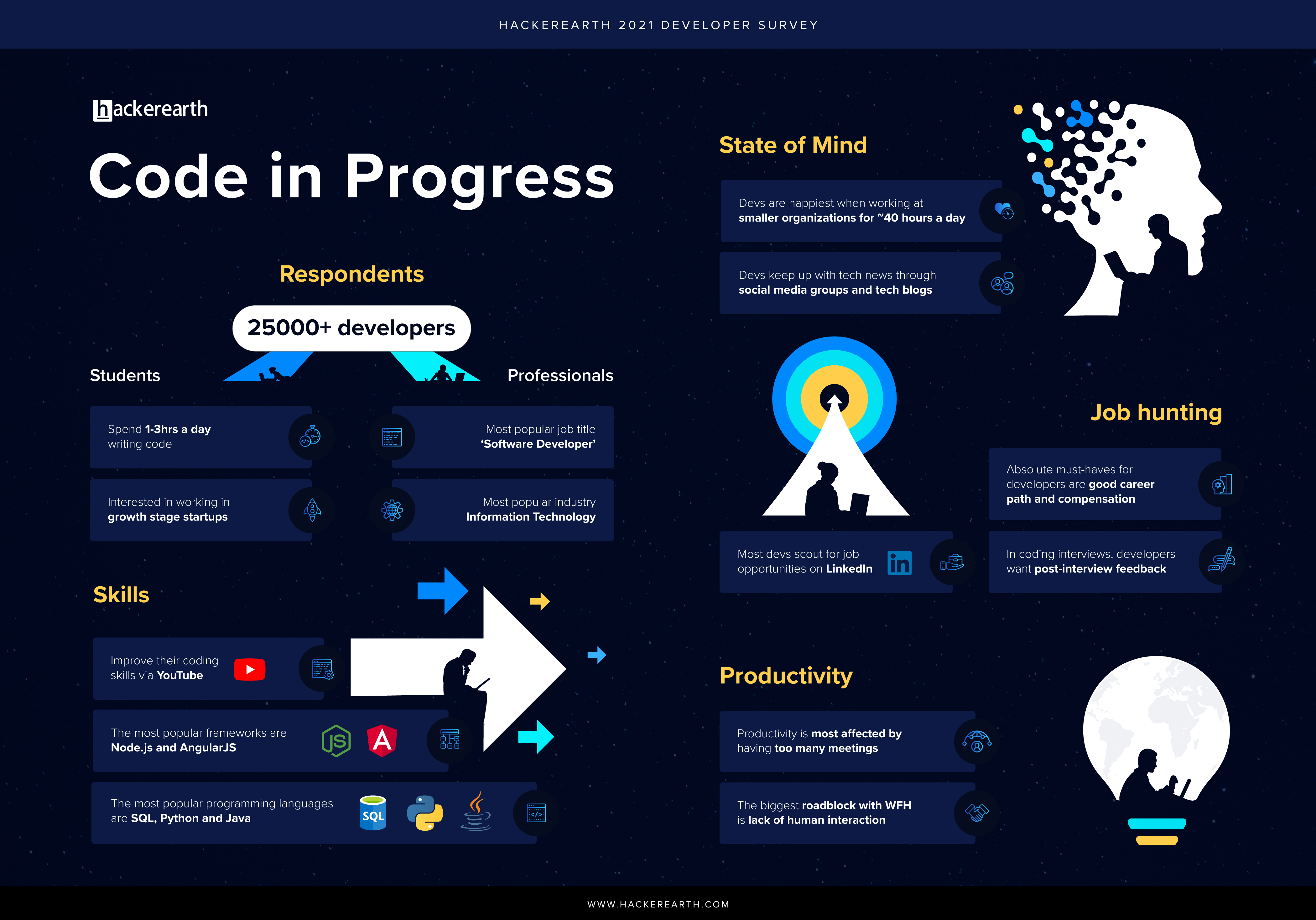The COVID-19 pandemic has disrupted the daily lives of people around the world. In the midst of the pandemic, the world is facing uncertainty across industries, and the recruitment industry is no different. Experts believe that the pandemic will have long-lasting effects on the recruitment industry even after it is left behind us. It will change how organizations attract, hire, and retain talent. Hence, recruiters and hiring managers have to prepare themselves to brace the changes brought about by the COVID-19 outbreak and continue to hire talented candidates. Here’s our take on a few hiring trends that the world will see in a post-COVID-19 world:
1. Recruitment strategies will shift to virtual platforms
Following the unforeseen disruption caused by the coronavirus pandemic, virtual interactions and remote interviews are replacing in-person job interviews and employee onboarding. Organizations are now resorting to intelligent automated systems that offer a virtual interviewing environment as well as provide a great onboarding experience.
Virtual platforms help the recruitment team to stay connected with candidates throughout the entire interview process without meeting them in person. Additionally, experts believe that the usage of coding assessment and video interview tools is expected to increase as part of the hiring process, especially in the tech industry.
One may ask, “Are remote hiring and onboarding just temporary solutions to tackle the COVID-19 pandemic?” We think not! Here’s why:
- According to recent studies, recruiters reported a 67% spike in video interviews. Candidates were keen too—with a 150% increase in the number of candidates wanting to digitize their CV with a video.
- Google has informed its candidates that interviews are to be conducted via Google Hangouts or using the organization’s videoconferencing service—BlueJeans. Also, the organization has witnessed a 60% increase in the use of Hangouts Meet.
- Amazon has set up virtual interview portals for candidates to quickly connect with recruiters and complete necessary documents. The company has canceled several in-person interviews and leverages its video conferencing software, Amazon Chime, to conduct remote interviews with candidates.
- According to a recent Gartner report, about 74% of CFOs expect some of their employees to continue working remotely even after the COVID-19 pandemic ends. Several organizations are planning to make flexible and remote work models a more permanent part of their cost- and workforce-management strategies after COVID-19 recedes.
Several organizations have moved to the virtual screening and onboarding process, with the aim to mitigate COVID-19-led disruption and sustain business continuity. But even beyond using virtual platforms for interviews, companies that learn to incorporate such platforms in new ways can open up a world of possibilities for reaching and communicating with candidates. That’s why virtual platforms will be one of the most relevant online recruiting strategies in the days to come.
Conduct remote coding interviews with FaceCode.
2. Candidate applications will surge significantly
Nearly 25 million people (and counting) worldwide face unemployment as COVID paralyzes all sectors of the modern economy. A quick recovery is unlikely, says Sangheon LEE, director of employment policy at the International Labor Organization.
In such times, companies are bound to see a spike in the number of applications for a job role. According to studies, youngsters are most likely to lose their jobs or see their income drop because of the pandemic. This can have serious long-term repercussions. If this cohort’s career is disrupted or postponed by even a year, it will have to compete with the new cohorts, joining the labor force after them—arguably, for fewer jobs.
Furthermore, as work from home becomes relatively commonplace, and remote jobs have no specific location requirements, organizations will receive job applications from around the world. Hence, the candidate pool is bound to increase.
As a benchmark, the average job advert receives 59 applicants. However, companies post COVID-19 can expect to receive over 250 applicants per job position.
As a result, recruiters and hiring managers should have smart recruitment strategies in place to tackle such high volume recruiting positions.
3. University recruitment will move online
One of the most fundamental areas that is rapidly changing is university recruitment. Some of these changes were evident even before the pandemic, such as digital portfolios, social media advertisements, and phone calls. They replaced the traditional methods to ease the tedious university recruitment process. In a post-COVID-19 world, students will experience university recruitment in a different light. Where recruiters have traditionally attracted students through on-campus events and tours, they must now shift focus to online activities. A study found that almost 73% of leaders are increasing their marketing efforts during this time. The study states that leaders are reallocating
- 18% for more content marketing
- 15% on organic growth
- 28% toward more online advertising
- and 12% on social media marketing
More organizations will use Instagram and Facebook to engage with prospective students, share alumni stories, and provide valuable tips. As physical contact will become more restricted, email marketing will offer a great opportunity for recruiters to contact prospective students.
Hire the best tech talent from universities without the need to travel. Find out more.
4. Number of middle-management positions will drop
The 2008 recession saw organizations pulling out all types of middle-management positions. The same trend may continue in 2021, says John Sculley, who served as Apple’s CEO from 1983 to 1993. “A lot of organizations are going to say, ‘Wait a minute, we don’t really need all these layers of middle management that we had in the past,’” Sculley tells CNBC Make It.
Roles in tech companies that were typically assigned to employees in the middle-level bracket may be handled by tools. For instance, Capgemini is using IBM’s cognitive consulting tool Watson to assign people to projects. However, one fear of flattening the middle-management structure is that fewer managers will be available to oversee a higher volume of direct reports. This will create room for error, lack of oversight, and mismanagement.
5. New employee rights will emerge
State and local governments have mandated paid sick leaves for all employees during the COVID-19 outbreak. Hence, many organizations are shifting their focus to hourly workers that were formerly excluded from such perks. It is expected that these laws and policies will accelerate even after the pandemic subsides. As organizations hire new employees and increase retention rates in the face of completion once the economy reviews, this change may become permanent. Companies will need to leverage everything available to keep their employees, partners, and customers as safe as possible.
How has tech recruitment changed after pandemic?
The recruitment landscape, and tech recruitment in specific, has been profoundly reshaped in the post-pandemic era, marked by a significant shift towards remote and hybrid work models, accelerating the digital transformation within hiring processes. Organizations now prioritize digital collaboration skills and autonomy in their search for talent, leveraging advanced digital tools and platforms for virtual interviews, digital onboarding, and AI-driven candidate screening. This transformation extends to an increased focus on employee well-being, work-life balance, and the need for flexibility, fundamentally altering not only how companies recruit but also how candidates evaluate potential employers. As a result, recruitment strategies now emphasize adaptability, digital proficiency, and a strong alignment between organizational values and candidate expectations, setting a new standard for the future of work.
Summing up…
While governments, businesses, and citizens are finding ways to overcome this catastrophe, experts are trying to analyze the impact of COVID-19 on the future of the recruitment industry. Upswings and downturns in the industry are unfortunate, but with this pandemic, one of the biggest changes in hiring trends is likely to be how the recruitment process itself is conducted. Hence, recruiters and hiring managers need to think ahead to stay on top of the curve.


































































